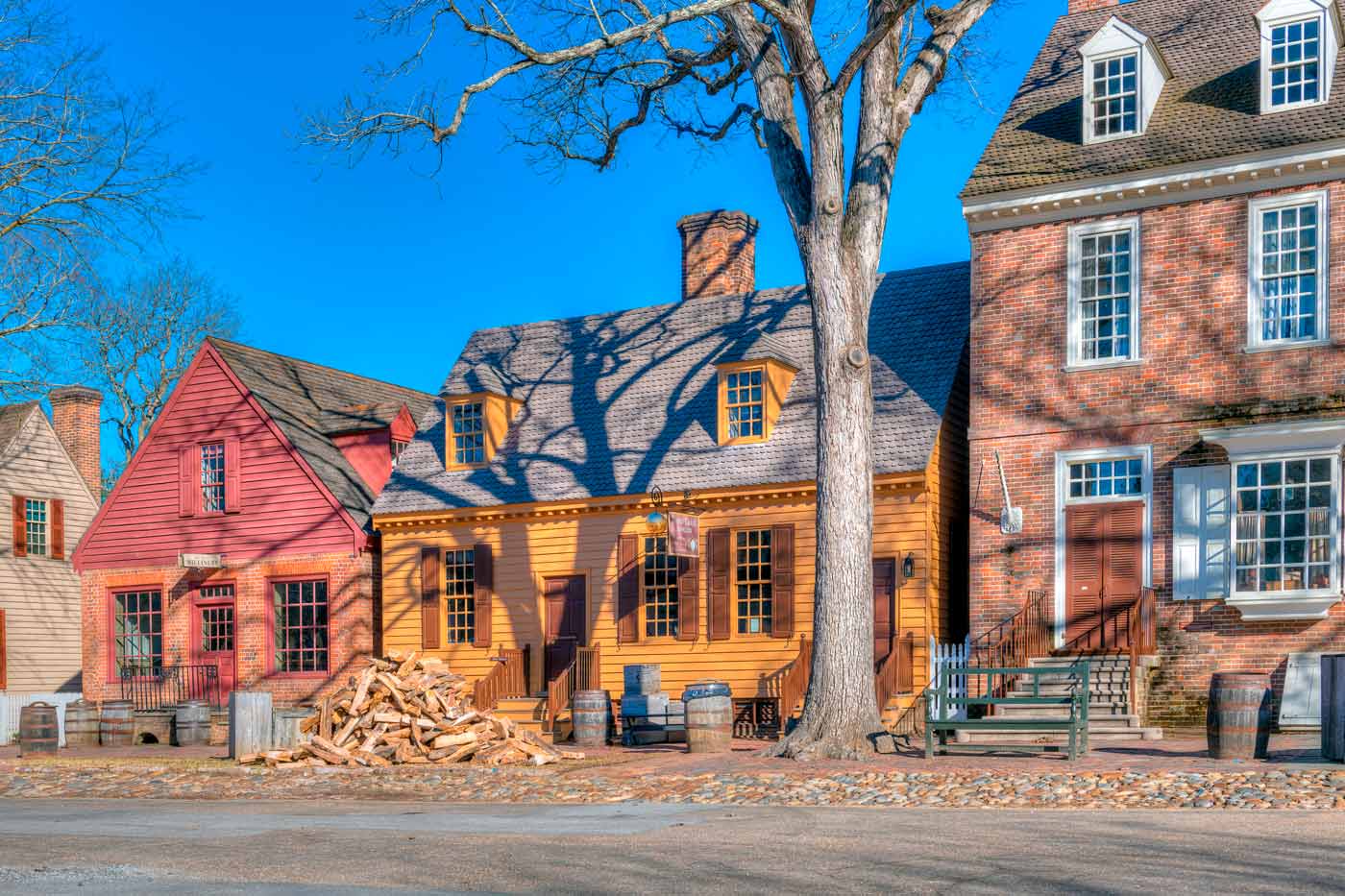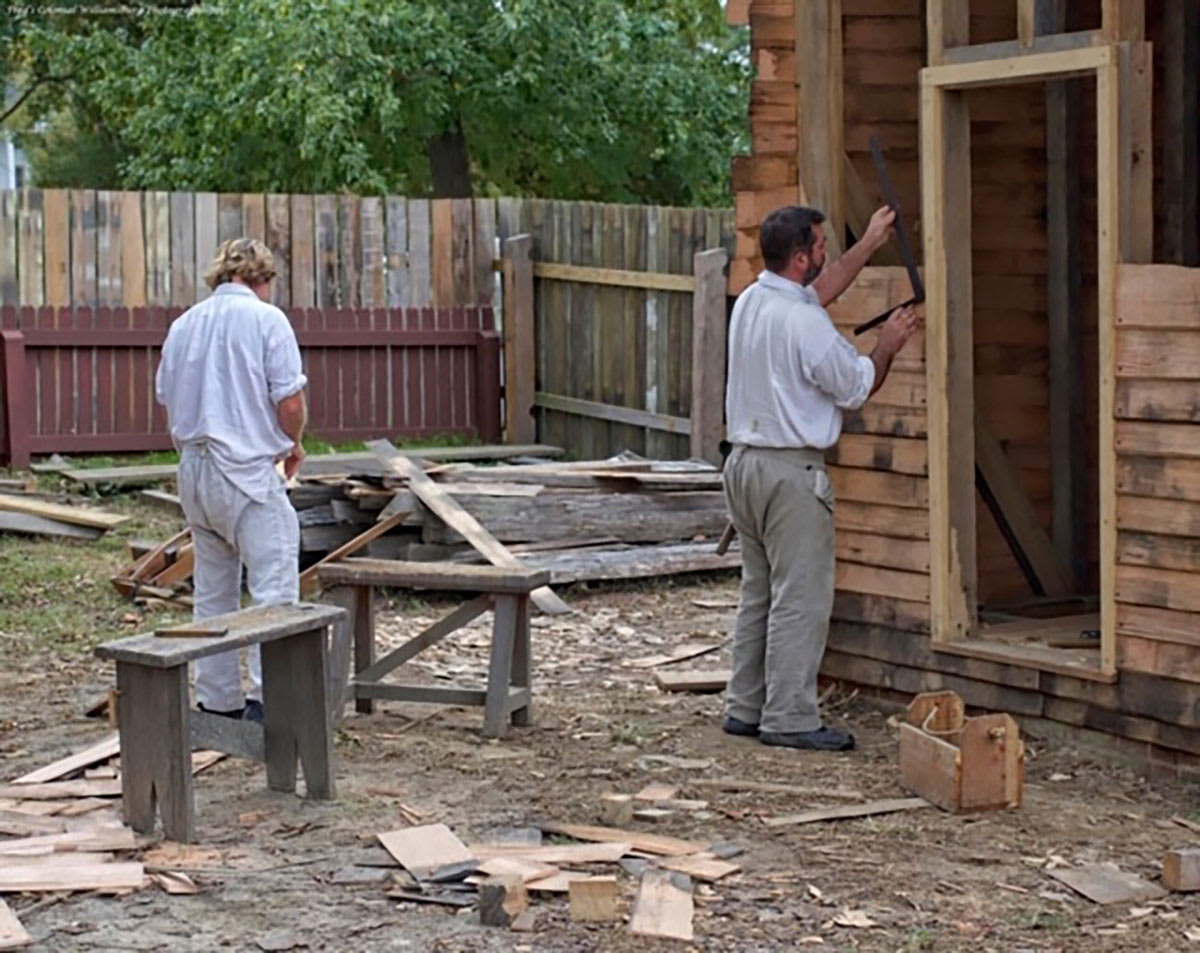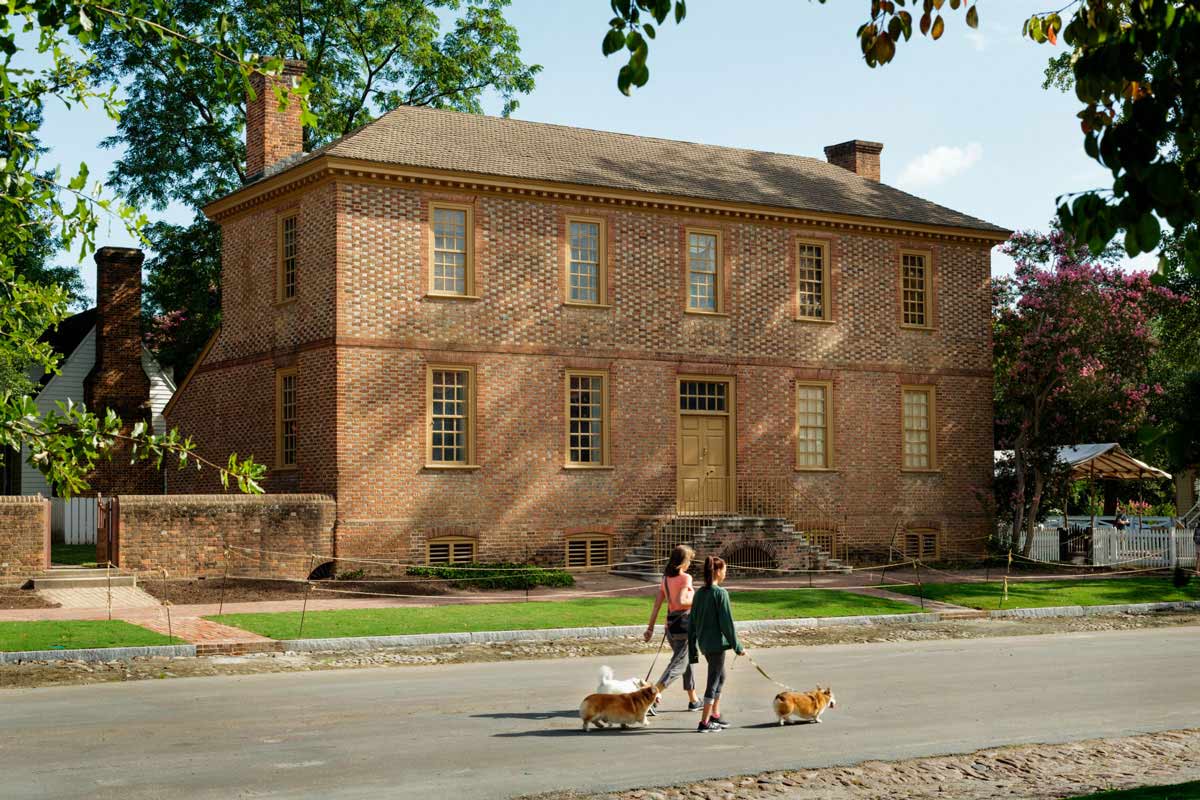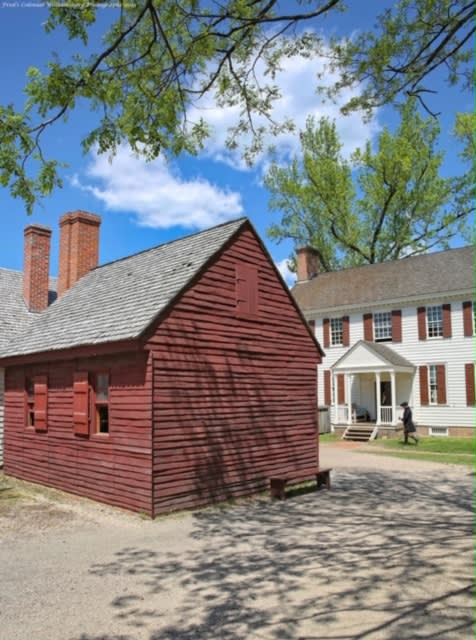Want to impress friends and enemies alike with your knowledge of Virginia's 18th-century architecture? Here are five important talking points:
We know that folks come to Colonial Williamsburg to see the Fife and Drum Corps, check out the adorable lambs, and make idle small talk with the landed gentry over dishes of coffee, but secretly, you're all here to see the architecture, right? The public buildings of colonial Virginia were meant to inspire and impress us. They were projections of the Crown’s power here in the Old Dominion. The buildings didn’t get to leave behind a written record, telling their story. So how does one go about appreciating Virginia's architectural stylings? A good place to start is with these five points.

1. WE DON'T REALLY EMPLOY ARCHITECTS HERE
Architects, as we understand the term today, do not really exist in 18th-century Virginia. Or 18th century anywhere, to be honest. The Crown, and some cities back in England, employ surveyors who design and oversee construction, sort of like engineers might today. The most famous, Sir Christopher Wren, redesigns London after the Great Fire of 1666. Virginia’s landed elite sometimes study architecture (along with botany, history, any subject that interests them) because they’ve got the time and money to do so, but really, they’re largely just hobbyists reading up on classical architecture of the Greeks and Romans. Most of the texts came from men like Andrea Palladio (1508-1580) and Leon Battista Alberti (1404-1472), literal Renaissance men, whose works have never gone out of print. These gents inspired Thomas Jefferson, whose existing sketches prove that he was likely the closest thing Virginia had to an architect and was a tireless promoter of the return to Roman-flavored classical architecture. (More on him down below...)

2. BUILDING WAS OFTEN DONE LITERALLY BY-THE-BOOK
So if architects aren't designing the buildings here in Virginia, who is? Well, often times it would be your builder. A master carpenter or bricklayer, overseeing a collection of hired tradesmen, would serve as the undertaker, literally undertaking your building project. This undertaker would have a sense of what was usual in Virginia architecture at the time and likely stick pretty close to acceptable norms in design. There’s also the likelihood that he had a little help from across the pond, in the form of a builder’s handbook or pattern book. Batty Langley’s “The City and Country Builder’s and Workman’s Treasury of Designs” (often mercifully shortened to “Langley’s Treasury”), Abraham Swan’s “British Architecture” and other similar works available at the time would have helped a Virginia builder by providing guidance on what was fashionable back home in England.
3. VIRGINIANS LIKED THEIR BUILDINGS BIG AND PLAIN
Speaking of what was fashionable in terms of architecture, it must be remembered that any designs would have to be interpreted through a largely homegrown body of builders. Virginia carpenters and bricklayers, while surrounded with the material necessary to build with, could be held back by their own rudimentary skill set or by a client’s lack of funds. Thus, a building took shape based on what the tradesmen were cable of, or by what a client could afford to have done. Virginians came to appreciate a restrained, somewhat plain architectural style. A good example here in Williamsburg is the Wythe House on Palace Green. Likely designed with the help of its original owner, Richard Taliaferro, it reflects a Virginia tradition found in many town properties and plantation houses: big and orderly, and uncluttered by excessive ornamentation.

4. BUT SOMETIMES WE BRING OVER ENGLISH EXPERTS
Private citizens were usually left to their own devices when hiring the workman to organize and oversee a building project. But those buildings put up for the common good at public expense (like, say, the Capitol in Williamsburg) often got a boost from specialized English undertakers, surveyors, or tradesmen brought over to supervise or lend expertise unavailable from local Virginian talent. Stone masons sent from England set the stonework found at the Governor’s Palace, along with specialized slaters. The Wren Building at the College of William and Mary was built under the watchful eye of English surveyor Thomas Hadley. The Capitol building at the opposite end of Duke of Gloucester Street, while overseen by Virginian Henry Cary, utilized a half dozen English carpenters and bricklayers, brought over for the duration of the project. Tavern owners were ordered not to serve these English builders food or drink without a special license obtained from the House of Burgesses; no reason is given, but perhaps these tradesmen were given to drinking in excess. (By comparison, we clean-living bricklayers and carpenters here at Colonial Williamsburg are known to only drink wholesome buttermilk.)
5. VIRGINIA’S COLONIAL ARCHITECTURE GIVES THOMAS JEFFERSON THE VAPORS
If any of you are fortunate enough to have visited Colonial Williamsburg’s brickyard, you already know how we feel about Thomas Jefferson. For those of you who have not yet made the trek to visit us, let’s just say a trip to see brickmaking puts you squarely in Aaron Burr territory. But I digress. As mentioned earlier, Mr. Jefferson did fancy himself an architect, and likely deserves the title, considering his education and ability to design. However, he was a fan of the Palladian style of classical architecture, drawing inspiration from old Roman buildings as interpreted by Andrea Palladio, and thus could not stand the blocky, plain stuff that surrounded him in Virginia. In his “Notes on the State of Virginia,” he decries that the Wren Building and the Public Hospital in Williamsburg are “rude, mis-shappen piles,” and notes that “no attempts are made at elegance,” in the design of Virginia’s public buildings. He sums up his feelings by claiming “[t]he Genius of architecture seems to have shed its maledictions over this land.” When discussing what the average Virginian could afford to build, he claims: “It is impossible to devise things more ugly, uncomfortable, and happily more perishable.” No wonder he eventually retreats to his Palladian fever dream of Monticello!

So now perhaps, dear reader, you have a better handle on Virginia architecture from the 18th century. Next time you find yourself strolling the Historic Area trying to get a selfie with the Marquis de Lafayette, spend some time taking a look at the buildings and thinking about the effort that went into designing them. Then be sure to visit the tradespeople learning and practicing the techniques of the 18th-century, at the brickyard and carpenter’s yard, for example.
And if you’d like to read a little more about some of the architecture of our fair city, get your hands on a copy of Marcus Whiffen's “The Public Buildings of Williamsburg,” a dated but still useful place to start.
Josh Graml is the journeyman-supervisor of Colonial Williamsburg’s Brickyard. His first job at Colonial Williamsburg was as a singing/dancing pirate alongside a certain Nation Builder (ask around). He graduated from Christopher Newport University last century with a degree in history, with an emphasis on Latin American studies. A native of central New York, he lives in Williamsburg and enjoys wistfully staring off into the distance, imagining a life at sea.
